SUNLAND PARK, New Mexico — The Mexican military is still on guard up and down the country’s shared border with the United States a year and a half after the Trump administration threatened to impose tariffs if the government did not block migrants who attempt to pass through.
Men carrying large guns nearly half the length of their bodies are on patrol on the southern side of an 18-foot-tall border fence that was erected during the Obama administration. Although a barrier stands here and divides both countries, regional Border Patrol leaders told the Washington Examiner during a recent tour that the fence itself has become a target for smugglers because it is easier for them to cut through than drive to a remote area where there is no fence.
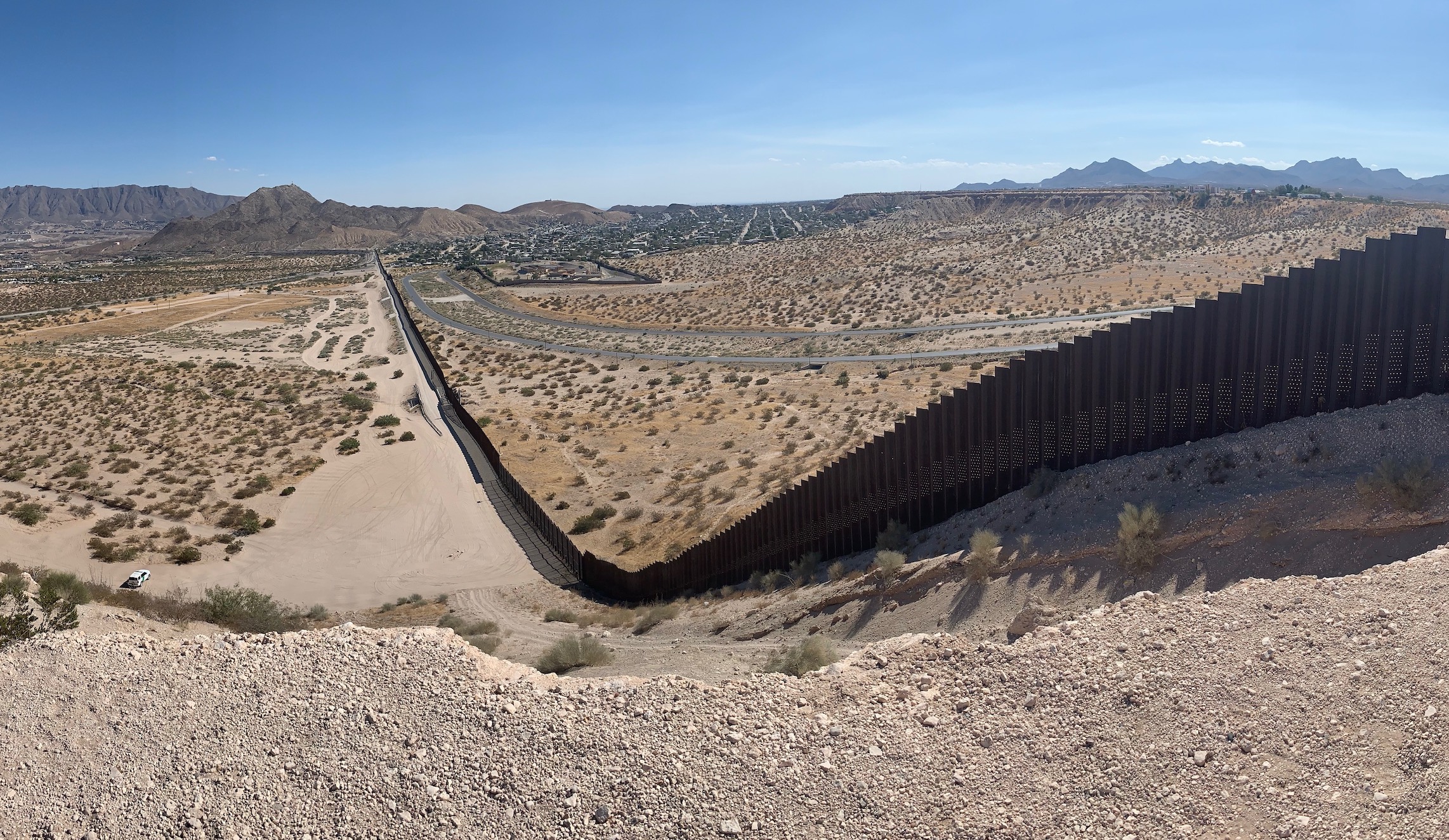
Gloria Chavez is the top Border Patrol official in the El Paso sector, one of nine regions that the Border Patrol divides the southern border into. Her region runs up from Fort Hancock, Texas, west to the Arizona-New Mexico state line. Since arriving last summer, she has focused heavily on increasing cooperation with her Mexican counterparts, even when it does not benefit her.
“The Mexican consulate … has been fantastic,” said Chavez. “We work together very closely.
The Texas city of El Paso sits on the western edge of the state, right up against southeastern New Mexico. Here, a mountain separates El Paso from Sunland Park, where, at the base of the mountain in New Mexico, new sections of border wall divides both countries. Two Mexican soldiers were sitting in a truck on the south side. Chavez immediately walked over and greeted them in Spanish.
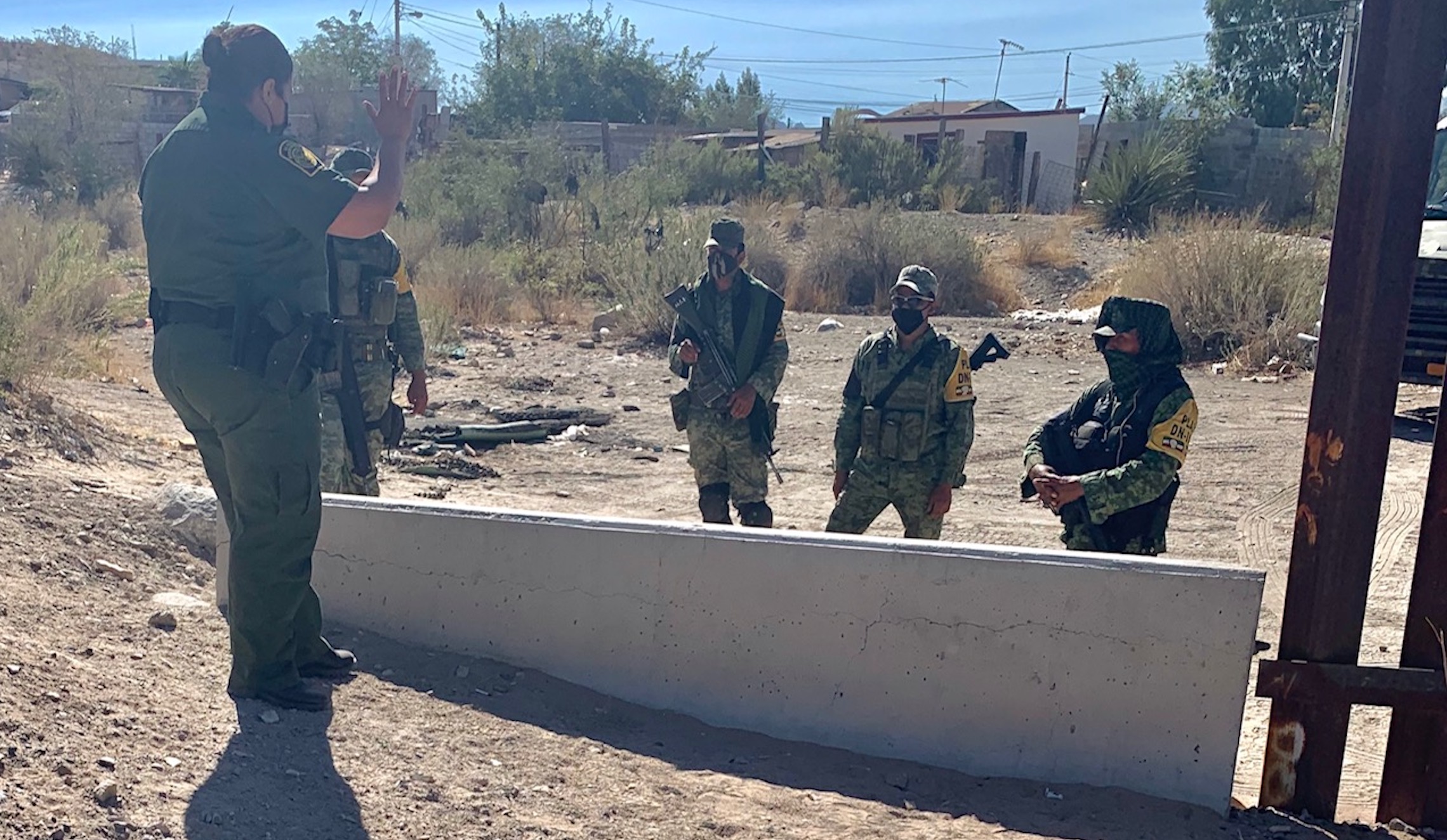
The three are speaking about border operations, and a few minutes into the conversation, two more Mexican soldiers come over. The gathering of now eight people, including us, draws two Mexican women from this village in hopes of selling us homemade tamales for 150 pesos. Chavez stays a bit longer talking. This is the kind of open dialogue she wants her agents to have with the Mexican military and communities they work in.
We then drive along this new wall in the sandy terrain and over a ledge. The new wall turns into older fencing, which is 18 feet tall and has been cut through hundreds of times. It is a prime area to sneak across because this old fencing is just 30 feet away from a Mexican highway that runs in either direction, says Border Patrol’s El Paso Chief of Operations Walter Slosar. This eastern region of New Mexico sees the third-most arrests of illegal immigrants in the nation out of more than 60 sub-regions. Last night, 75 people were arrested coming through here, and another 75 were encountered the night before.
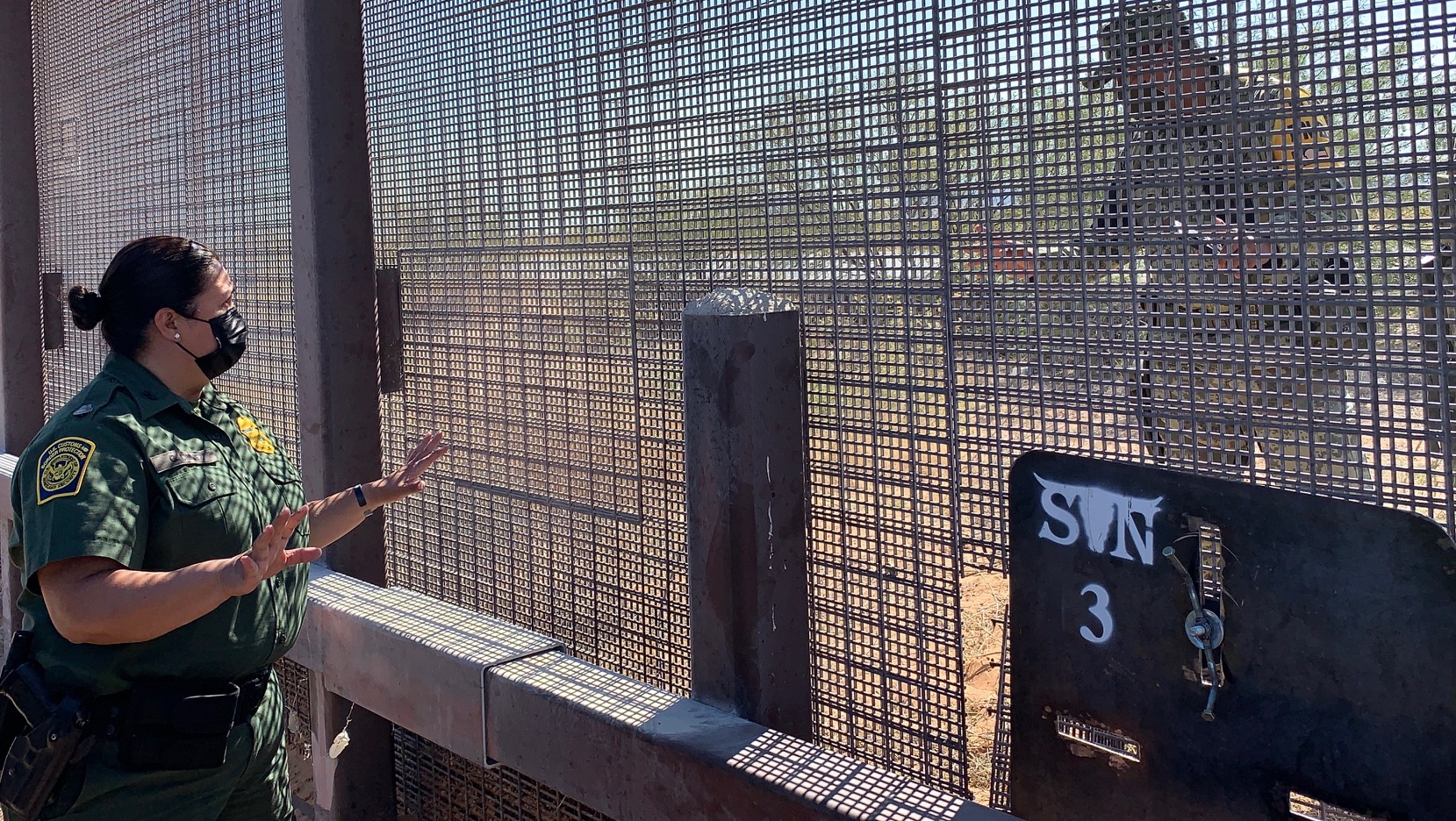
The fence here has been cut through hundreds of times and patched up by the U.S. We see a big cut in the fence that is large enough for a person to climb through. On the southern side, five heavily armed soldiers in a Mexican pickup truck are inspecting the hole from their side of the border. The others are looking for a saw or tool that may have been left behind by the cutter. Breaches like these will be fixed within 24 hours, but because this cut is roughly 12 hours old, a large piece of steel has been affixed into the hole to keep anyone from getting through the fence until a better fix can be made.
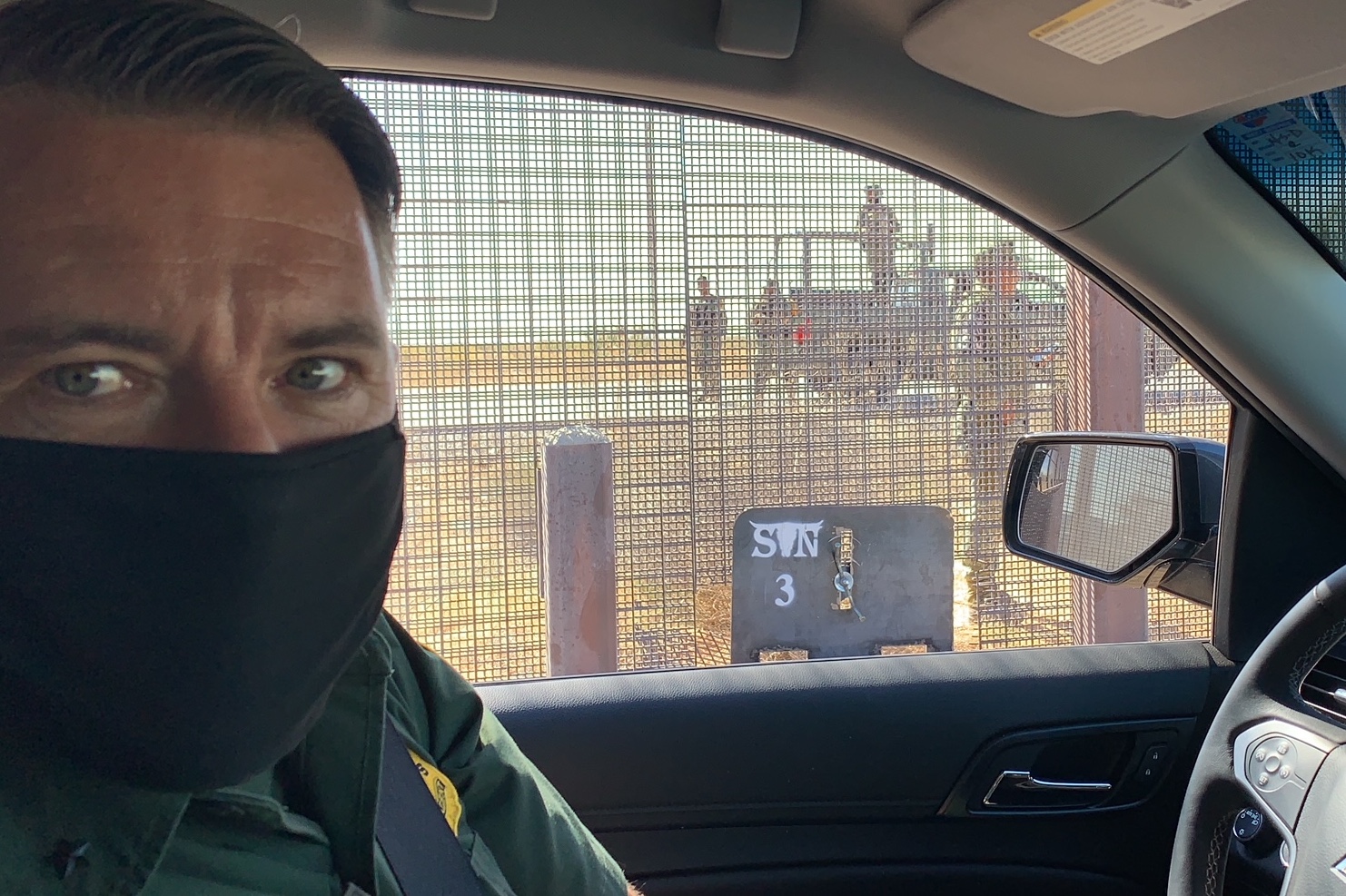
Slosar says the large amount of new steel wall going up in remote spots of New Mexico, where hundreds of people were being dropped off by charter buses, then illegally crossing into the U.S., has forced smugglers to go about their business here instead.
“In areas where this wall system is up, they’re always picking on the areas where we have the double mesh,” said Slosar. “When we have the wall system, that changes the whole thing. They can’t get through the wall system.”
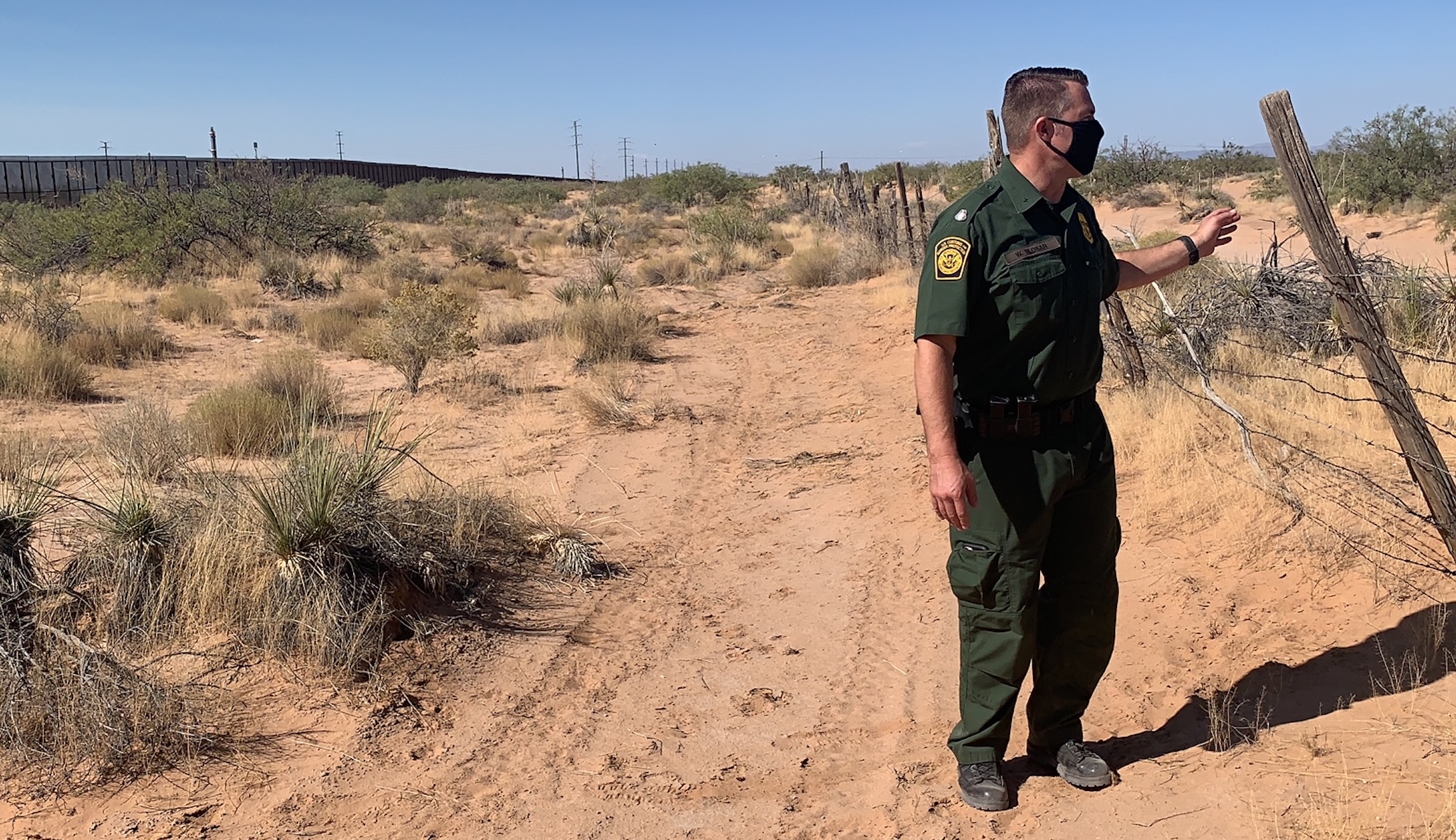
Since the start of the coronavirus pandemic, Border Patrol has sent most illegal immigrants back to Mexico rather than taking people into custody then transferring them to immigration detention facilities. In El Paso, approximately 30,000 people have been returned to Mexico. The problem when that order came out, Chavez says, was again how to work with Mexico.
People sent back to Mexico were initially walked through the land ports of entry or border crossings where cars are inspected. The El Paso region has seven of these ports across its 264 miles of international border. Some of these crossings, such as Antelope Wells, are extremely remote with no gas station, place to eat, or taxi for dozens of miles. Chavez said her Mexican counterpart called her for help even though the U.S. policy did not require her to make exceptions at the request of Mexico.
“‘I understand you’re being asked to launch quickly,’” Chavez recalled him asking. “‘The staffing at the different ports on the Mexican side — not adequate. Is there a way you and I can coordinate?’ … So I coordinated with Mexican consul, and we agreed on three ports of entry, right? That was a little restricted for me.”
That decision made it harder for her agents working 100 miles west in New Mexico to return people to Mexico after they were arrested in New Mexico. They would have to be transported all the way to El Paso, then returned through Ciudad Juarez in Mexico, but she did it anyway to help Mexico and so not to abandon migrants in a deserted area just because there was a border crossing there. Six months later, Chavez continues to invest in that bilateral relationship.
“I want them to understand how much we appreciate them, and whenever we need them, or they need us,” said Chavez. “That’s what it’s about to make our border more safe, not only for the community on the United States site but also the Juarez side because this is the kind of community that we are.”

